...pation!
Welcome to this, the unfortunately delayed final entry in my 5-part series on the tools, mechanics and techniques in Whip Artistry! To summarize, Part One covered the construction and Anatomy of a fine Australian-style bullwhip. Part Two discussed the physics and principles involved in making a whip crack efficiently and effectively, (specifically Newton’s Laws of Motion concerning Conservation of Energy, Conservation of Momentum, and Inertia.) Part Three was a somewhat general overview of the “Circle Model” of whip practice and training that I have developed, drawing on the instruction, insight and inspiration from numerous teachers, fellow artists, artisans, and friends.
Parts Four and Five delve into two other training systems and approaches to Bullwhip Arts, and how the Circle Model discussed in Part 3 relates to and differs from them.
In the previous essay, I discussed Anthony DeLongis’s “Rolling Loop” method, and how it greatly deviates from the more traditional “Wild West” style of whip cracking. I ended that essay promising to discuss HOW and WHY the energy driving the whip comes from the hip in DeLongis Rolling Loop, and I will get to that. But first, I need to lay the groundwork for Ron Lew’s Tibetan Wave Filipino Martial Art system.
The form and technique of Tibetan Wave is a rather eclectic hybrid that combines concepts and forms from a number of very different martial arts styles and philosophies. A number of people have openly asked both Master Lew and me about exactly how a style he describes as Filipino that was developed by a Chinese American martial artist can be “Tibetan.”
The “official” answer is that soon after Master Lew began his exploration of applying Filipino Eskrima stick techniques to the bullwhip with Latigo y Daga founder, Guro Tom Meadows, he demonstrated the now trademark “Fishtail” back-and-forth motion that demonstrates the fluidity and dynamism that is the basis of Master Lew's unique style.
Welcome to this, the unfortunately delayed final entry in my 5-part series on the tools, mechanics and techniques in Whip Artistry! To summarize, Part One covered the construction and Anatomy of a fine Australian-style bullwhip. Part Two discussed the physics and principles involved in making a whip crack efficiently and effectively, (specifically Newton’s Laws of Motion concerning Conservation of Energy, Conservation of Momentum, and Inertia.) Part Three was a somewhat general overview of the “Circle Model” of whip practice and training that I have developed, drawing on the instruction, insight and inspiration from numerous teachers, fellow artists, artisans, and friends.
Parts Four and Five delve into two other training systems and approaches to Bullwhip Arts, and how the Circle Model discussed in Part 3 relates to and differs from them.
In the previous essay, I discussed Anthony DeLongis’s “Rolling Loop” method, and how it greatly deviates from the more traditional “Wild West” style of whip cracking. I ended that essay promising to discuss HOW and WHY the energy driving the whip comes from the hip in DeLongis Rolling Loop, and I will get to that. But first, I need to lay the groundwork for Ron Lew’s Tibetan Wave Filipino Martial Art system.
The form and technique of Tibetan Wave is a rather eclectic hybrid that combines concepts and forms from a number of very different martial arts styles and philosophies. A number of people have openly asked both Master Lew and me about exactly how a style he describes as Filipino that was developed by a Chinese American martial artist can be “Tibetan.”
The “official” answer is that soon after Master Lew began his exploration of applying Filipino Eskrima stick techniques to the bullwhip with Latigo y Daga founder, Guro Tom Meadows, he demonstrated the now trademark “Fishtail” back-and-forth motion that demonstrates the fluidity and dynamism that is the basis of Master Lew's unique style.
“I've never seen anything like that!” Guro Meadows told Master Lew, “What should we call that?”
“Tibetan Wave” was the impromptu answer from Master Lew, and the name not only came to be
applied to the undulating motion that Master Lew was demonstrating, but the entire style he now
teaches in seminars around the globe and in the training video I produced with him. That’s typically what his answer is when asked.
However, there is a more in-depth answer that Ron never shared directly with me or with anyone, but that I have managed to uncover indirectly and piece together over the nearly seven years that I've had the opportunity to communicate, train and collaborate with him.
This is something you learn in dealing with Ron. It’s rare that he will ever simply tell you anything outright. I think he was inspired to this practice by his teacher, the late Cacoy Cañete, (more on him in a bit). Noy Cacoy often would be sparring with Ron, and would change up something he had taught Ron before. Ron would say, “Cacoy, you used to do this X way, but now you’re doing it Y...Why did you change it?” Cacoy would then smile and say “Oh! You Noticed!” and would then explain. Ron constantly says “If you want to know, just ask!” and he’s serious. He is an excellent teacher and instructor, and if you’re wanting deeper insights as to the why’s and where’s beyond the instruction, he’ll gladly tell you anything you want to know, but he doesn’t volunteer that information until you ask him about it directly. He wants you to discover those insights on your own, so they came from YOU rather than being TOLD. (FYI, this following information about WHY it’s REALLY called “Tibetan Wave” was pieced together and run by Ron...who confirmed that I was correct in WHY it’s called Tibetan Wave. Because “Oh! You noticed!”)
Foundationally, Master Lew began to develop Tibetan Wave shortly after Guro Meadows began to develop Latigo y Daga. Latigo y Daga, is a slightly more widespread Filipino combat technique that is discussed in detail in Tom Meadows singular book, The Filipino Fighting Whip.
Guro Meadows technique has its origin in his years of training with Guro Dan Inosanto, applying
Filipino Olisi stick techniques to the bullwhip, and was greatly inspired and encouraged by fellow Inosanto student, Anthony DeLongis, (remember him from last episode?) The whip in Filipino martial tradition was often a longer, heavier, slower whip fashioned from rope. Latigo y Daga uses a shorter, lighter bullwhip crafted using fine Australian construction techniques that produce a fast, deadly accurate, and easily cracked whip.
One of the key features of Latigo y Daga, and indeed the namesake of the form, (Spanish for “Whip and Knife”), pairs the whip with a bladed or rigid weapon in the off hand. Ideally the whip is used for long and medium range attacks and to keep the opponent at a distance, while the offhand would hold a stick or knife to attack and defend at medium and close ranges should the opponent get past the longer threat range of the whip.
Master Lew's Tibetan Wave technique follows many of the tenants of the Cacoy Doce Pares style of Eskrima he studied under legendary Filipino martial artist, Ciriaco "Cacoy" Cañete. Cacoy Doce Pares is generally a very aggressive, close range (corto mano) style where the practitioner - the Eskrimador - trains predominantly with a single stick, (rather than the double-stick techniques popularized in Balintawak and various forms of Arnis.) Cacoy believed that the opposable thumb on the off-hand was superior to any weapon one could carry, and holding a knife or stick in it was actually a disadvantage. Cacoy Doce Pares greatly demonstrates the fluidity of disarms and stick/opponent control that become possible when the Eskrimador doesn't look at their empty off-hand as a disadvantage in a fight.
“Tibetan Wave” was the impromptu answer from Master Lew, and the name not only came to be
applied to the undulating motion that Master Lew was demonstrating, but the entire style he now
teaches in seminars around the globe and in the training video I produced with him. That’s typically what his answer is when asked.
However, there is a more in-depth answer that Ron never shared directly with me or with anyone, but that I have managed to uncover indirectly and piece together over the nearly seven years that I've had the opportunity to communicate, train and collaborate with him.
This is something you learn in dealing with Ron. It’s rare that he will ever simply tell you anything outright. I think he was inspired to this practice by his teacher, the late Cacoy Cañete, (more on him in a bit). Noy Cacoy often would be sparring with Ron, and would change up something he had taught Ron before. Ron would say, “Cacoy, you used to do this X way, but now you’re doing it Y...Why did you change it?” Cacoy would then smile and say “Oh! You Noticed!” and would then explain. Ron constantly says “If you want to know, just ask!” and he’s serious. He is an excellent teacher and instructor, and if you’re wanting deeper insights as to the why’s and where’s beyond the instruction, he’ll gladly tell you anything you want to know, but he doesn’t volunteer that information until you ask him about it directly. He wants you to discover those insights on your own, so they came from YOU rather than being TOLD. (FYI, this following information about WHY it’s REALLY called “Tibetan Wave” was pieced together and run by Ron...who confirmed that I was correct in WHY it’s called Tibetan Wave. Because “Oh! You noticed!”)
Foundationally, Master Lew began to develop Tibetan Wave shortly after Guro Meadows began to develop Latigo y Daga. Latigo y Daga, is a slightly more widespread Filipino combat technique that is discussed in detail in Tom Meadows singular book, The Filipino Fighting Whip.
Guro Meadows technique has its origin in his years of training with Guro Dan Inosanto, applying
Filipino Olisi stick techniques to the bullwhip, and was greatly inspired and encouraged by fellow Inosanto student, Anthony DeLongis, (remember him from last episode?) The whip in Filipino martial tradition was often a longer, heavier, slower whip fashioned from rope. Latigo y Daga uses a shorter, lighter bullwhip crafted using fine Australian construction techniques that produce a fast, deadly accurate, and easily cracked whip.
One of the key features of Latigo y Daga, and indeed the namesake of the form, (Spanish for “Whip and Knife”), pairs the whip with a bladed or rigid weapon in the off hand. Ideally the whip is used for long and medium range attacks and to keep the opponent at a distance, while the offhand would hold a stick or knife to attack and defend at medium and close ranges should the opponent get past the longer threat range of the whip.
Master Lew's Tibetan Wave technique follows many of the tenants of the Cacoy Doce Pares style of Eskrima he studied under legendary Filipino martial artist, Ciriaco "Cacoy" Cañete. Cacoy Doce Pares is generally a very aggressive, close range (corto mano) style where the practitioner - the Eskrimador - trains predominantly with a single stick, (rather than the double-stick techniques popularized in Balintawak and various forms of Arnis.) Cacoy believed that the opposable thumb on the off-hand was superior to any weapon one could carry, and holding a knife or stick in it was actually a disadvantage. Cacoy Doce Pares greatly demonstrates the fluidity of disarms and stick/opponent control that become possible when the Eskrimador doesn't look at their empty off-hand as a disadvantage in a fight.
In this exchange from a Cacoy Doce Pares seminar lead by Ron and his long-time training partner and student, Grand Master Rommel Jimenez, (video courtesy of our good friend, Jhoanna Trias,) you can see how the off-hand is incorporated. That close distance between opponents - almost “dance partner” close - is typical of Cacoy’s style, and the speed at which they are moving in this video is greatly slowed for demonstration purposes. I’ve seen them actually training at full-speed, and it’s blinding fast. You can also see that Cacoy Doce Pares incorporates a great number of Jiu Jitsu style joint locks, and incorporates Judo-style throws, so Cacoy Doce Pares is already an eclectic hybrid system, drawing on martial arts techniques other than Filipino.
This brings us back to the development of Tibetan Wave. Much of Master Lew’s initial work with the Latigo y Daga bullwhip was a solo endeavor. Guro Meadows demonstrated the foundational principles and concepts, showed him a couple ways to crack the whip, (simple compound crack variations as discussed in the exploration of the “Circle Model” in Part Three ) and then left Master Lew to explore and practice on his own for a couple of months.
Ron’s desire to apply Noy Cacoy’s empty off-hand techniques to bullwhip presented a conundrum. The whip is traditionally a medium-to-long range weapon, and if one is in range to strike with the whip, they are not readily in range to counter or block with the off-hand like they are in the extremely close range that Doce Pares favors.
So, what to do with the off hand?
Here is where Master Lew's style makes a great departure from every other whip style I have ever encountered. Long before meeting Master Cacoy, Ron had studied directly under Sifu Paul Eng and was one of his first two students on the West Coast. Ron soon opened the Tiger Eye Claw school in San Jose, and spent almost two decades teaching Kung Fu and Tai Chi.
In 1981, he attended a seminar by Professor Peng si Yu, a Qi Gong master from Shanghai, and was literally floored at what the then 80 year old man was able to do, (when I say “Literally Floored”, I am not speaking hyperbolically or metaphorically.)
Master Lew then began his study of meditation and Qi Gong with Professor Yu. Yu spoke no English, and Ron spoke no Chinese, “But we both spoke energy,” Master Lew told me. That same year, while he was teaching Tai Chi and Kung Fu, and learning meditation, Qi Gong and energy work from Professor Yu, a student of his introduced him to Lopon le Hu, a Tibetan Monk living in the US, who began to share the Tibetan approach to energy with Ron.
Master Lew found himself in a unique position to study these two very different approaches: Tibetan Energy Healing Techniques rooted heavily in Tibetan Buddhism and Bon Shamanism, and the Chinese Energy Techniques rooted in Zen Buddhism and Taoism. Master Lew soon found himself more drawn to the Tibetan approach to energy work, and began to apply those concepts to his Chinese Kung Fu, Tai Chi, and Qi Gong techniques, (for further example of this, see Master Lew’s Tibetan Tai Chi and Tibetan Qi Gong and Nei Gong training videos.)
As I have discussed in every post leading up to this one, the action of the whip is a physical manifestation of the flow of energy: Kinetic energy emanating from the dominant hand of the whip artist flows down the length of the whip, concentrating and accelerating to the point of the crack. The energy accelerates down the length of the whip, and as Newton’s laws of motion dictate, that flow of energy travels in a straight line, and I’ve spent about 17,000 words up until now explaining how that process works in this blog series.
In Tibetan Wave, the dominant hand sends energy down the length of the whip in a straight line as it does in every other bullwhip technique we’ve discussed up until now. Within Tibetan Wave, the off-hand is used to shape, redirect, focus, and stall the energy flowing down the length of the whip before the whip cracks.
As was mentioned in Part 3’s discussion of the Circle Model, changing the direction or interrupting the flow of energy down the whip before the crack has occurred is typically inefficient and makes the whip behave unpredictably.
For Ron, that unpredictable chaos is a whole new playground, dance floor, and battlefield to explore.
I have written quite a bit about the first time I saw Master Lew demonstrating Tibetan Wave. I discuss it in an article I wrote on Tibetan Wave for the upcoming flexible weapons edition of The Immersion Review magazine, I talk about it extensively in my section of the forward to Head Instructor at Tibetan Wave Germany, Michael Parchmann’s biography of Ron, “Life and Chi: It’s Easy Not Simple,” and I wrote about it here on this blog post back in 2015. I’d never seen anything like it. The whip was whirling around Ron like an electron cloud of an atom, seeming to pop loudly at odd intervals and odd angles to where it had popped just moments before. Ron was the nucleus of that atom, standing mostly still with his hands just moving about him in slow, circular,Tai-Chi motions.
This brings us back to the development of Tibetan Wave. Much of Master Lew’s initial work with the Latigo y Daga bullwhip was a solo endeavor. Guro Meadows demonstrated the foundational principles and concepts, showed him a couple ways to crack the whip, (simple compound crack variations as discussed in the exploration of the “Circle Model” in Part Three ) and then left Master Lew to explore and practice on his own for a couple of months.
Ron’s desire to apply Noy Cacoy’s empty off-hand techniques to bullwhip presented a conundrum. The whip is traditionally a medium-to-long range weapon, and if one is in range to strike with the whip, they are not readily in range to counter or block with the off-hand like they are in the extremely close range that Doce Pares favors.
So, what to do with the off hand?
Here is where Master Lew's style makes a great departure from every other whip style I have ever encountered. Long before meeting Master Cacoy, Ron had studied directly under Sifu Paul Eng and was one of his first two students on the West Coast. Ron soon opened the Tiger Eye Claw school in San Jose, and spent almost two decades teaching Kung Fu and Tai Chi.
In 1981, he attended a seminar by Professor Peng si Yu, a Qi Gong master from Shanghai, and was literally floored at what the then 80 year old man was able to do, (when I say “Literally Floored”, I am not speaking hyperbolically or metaphorically.)
Master Lew then began his study of meditation and Qi Gong with Professor Yu. Yu spoke no English, and Ron spoke no Chinese, “But we both spoke energy,” Master Lew told me. That same year, while he was teaching Tai Chi and Kung Fu, and learning meditation, Qi Gong and energy work from Professor Yu, a student of his introduced him to Lopon le Hu, a Tibetan Monk living in the US, who began to share the Tibetan approach to energy with Ron.
Master Lew found himself in a unique position to study these two very different approaches: Tibetan Energy Healing Techniques rooted heavily in Tibetan Buddhism and Bon Shamanism, and the Chinese Energy Techniques rooted in Zen Buddhism and Taoism. Master Lew soon found himself more drawn to the Tibetan approach to energy work, and began to apply those concepts to his Chinese Kung Fu, Tai Chi, and Qi Gong techniques, (for further example of this, see Master Lew’s Tibetan Tai Chi and Tibetan Qi Gong and Nei Gong training videos.)
As I have discussed in every post leading up to this one, the action of the whip is a physical manifestation of the flow of energy: Kinetic energy emanating from the dominant hand of the whip artist flows down the length of the whip, concentrating and accelerating to the point of the crack. The energy accelerates down the length of the whip, and as Newton’s laws of motion dictate, that flow of energy travels in a straight line, and I’ve spent about 17,000 words up until now explaining how that process works in this blog series.
In Tibetan Wave, the dominant hand sends energy down the length of the whip in a straight line as it does in every other bullwhip technique we’ve discussed up until now. Within Tibetan Wave, the off-hand is used to shape, redirect, focus, and stall the energy flowing down the length of the whip before the whip cracks.
As was mentioned in Part 3’s discussion of the Circle Model, changing the direction or interrupting the flow of energy down the whip before the crack has occurred is typically inefficient and makes the whip behave unpredictably.
For Ron, that unpredictable chaos is a whole new playground, dance floor, and battlefield to explore.
I have written quite a bit about the first time I saw Master Lew demonstrating Tibetan Wave. I discuss it in an article I wrote on Tibetan Wave for the upcoming flexible weapons edition of The Immersion Review magazine, I talk about it extensively in my section of the forward to Head Instructor at Tibetan Wave Germany, Michael Parchmann’s biography of Ron, “Life and Chi: It’s Easy Not Simple,” and I wrote about it here on this blog post back in 2015. I’d never seen anything like it. The whip was whirling around Ron like an electron cloud of an atom, seeming to pop loudly at odd intervals and odd angles to where it had popped just moments before. Ron was the nucleus of that atom, standing mostly still with his hands just moving about him in slow, circular,Tai-Chi motions.
The above video was shot in Germany around 2015 during one of the early Tibetan Wave seminars Ron held there and demonstrates some of what I’m talking about. Again, this was for demonstration purposes, and like his Eskrima work, It’s just a blur of motion and whip cracks at full speed.
This demonstrates where the off-hand comes into play, intercepting the flow of the whip and redirecting it. To apply the “Circle Model” to Tibetan Wave, you could say that in some techniques Ron is using in this video, the load phase of the crack is done with the dominant hand, and the throw phase is done with the off hand, and vice versa..They alternate, Ron explores a lot of previously uncharted ground here. In many instances, the off-hand places the whip at the 180 degree point so that the dominant hand can throw the whip into the crack, in others it intercepts the whip during the 180-degree arc of the throw phase and moves the whip out of plane, shifting its energy and direction.
It should be noted here that in Buddhist and Taoist philosophies and practices of Tai Chi, Qi Gong, and other types of Eastern “Energy Work” and Internal Martial Arts, the right hand, (typically the dominant hand,) sends out active, positive, dynamic Yang (Masculine,) energy and the Left hand sends out passive, negative, Yin (Feminine) energy. “Masculine” and “Feminine” here are not in reference to gender, but in the interplay between opposite forces that combine to form all life, movement and flow in the world. This reflects deeply in Ron’s approach to Tibetan Wave, as Ron’s Yang-centered right hand tends to be the channel through which energy is imparted to the whip, while the Yin-centered left hand redirects, shifts, and shapes the flow of that energy.
The off-hand also does not grasp or yank on the whip, but intercepts, follows, and guides the thong of the whip as one does in Chinese Tuishou “Push Hands” Tai Chi techniques and the Chi Sau “Sticky Hands” methods in Wing Chun Kung Fu.
As a student of Tibetan Wave explores shifting direction, flow, and tempo of the whip with their off hand, they may also begin to explore where they draw the energy that they put into the whip with their dominant hand. In most instances of Australian competition, Wild West performance, and martial arts done with a whip, the source of the power driving the whip tends to be generated by the shoulder and wrist of the whip performer.
Go back and watch the previous video of Master Lew doing some free-form Tibetan Wave and watch the way his upper body rotates as he shifts his weight from one foot to the other. That same type of shift in weight is what drives the whip forward in the “Basic Forward Throw” of DeLongis Rolling Loop. This is what I teased at the end of Part 4, but I wanted to discuss this here, as THIS is part and parcel to the common ground between Tibetan Wave and Rolling Loop.
As I said in the last couple paragraphs in Part Four, while the Basic Forward Throw in Rolling Loop doesn’t have what could be called a conventional “Load Phase”, it does have a very abbreviated one. In Rolling Loop training, the basic stance is that the feet are shoulder width apart, toes pointed directly forward and the foot on the off-hand side of the body is planted forward, but the shoulders are square to the target. It is very similar to a retracted stance in most Okinawan styles of Karatedo, though not as deep.
That abbreviated “Load Phase” that allows the whip to stretch out somewhat so that the whip rolls FORWARD rather than UPWARD in the Rolling Loop Basic Throw, (as I mention in Part Four,) is the same power behind all punches and blocks in Karate. It comes from a shift in weight from the back foot to the front foot...That causes the hip to rotate forward, and if the feet are pointed forward, the hip, spine, shoulder and arm all extend forward as well in perfect musculoskeletal alignment...That four to five inches of forward motion of the shoulder allows the whip to stretch out a bit behind the whip artist and the whip rolls out FORWARD, (not upward,) into a light but precise crack. As was also stated in part 4, the Compound and Elliptical throws in Rolling Loop are really just setups for the Basic Throw, so the whip in Rolling Loop is powered by the shift in weight and the forward rotation of the hip.
In Tibetan Wave, that power comes from a very similar hip rotation caused by a similar shift in weight between the whip artist’s feet. In Tai Chi, that weight shift causes the upper body to rotate, and that rotation changes the orientation of the lower dantien - the center of gravity and energy source and center of the body in Eastern Martial Arts, located approximately three inches below the navel - changing the direction that it points. It is through that rotation of the dantien and shift in weight that all flow and movement in Tai Chi originates, and if you watch the video of Master Lew above, you will see that this is also where he’s drawing the power that’s driving the motion of the whip.
It’s a very subtle difference where one has to know what to look for, (just as one needs to know what to look for to see that the bulk of the energy imparted during the Load Phases of the Compound and Elliptical throws in Rolling Loop is sloughed off in the hesitation before the throw, and the primary drive forward is coming from the hip.)
As one continues to work, one can begin to explore how they power the whip: From the wrist, from the shoulder, from the hip, from pushing off with the back foot while both energizing and de-energizing the whip with the left hand and changing direction, flow, tempo and power.
Working with Tibetan Wave becomes less an exercise in power, speed and accuracy as it is in most martial and Wild West Arts practices, and more an exploration of flow and rhythm. The power, speed and accuracy with the whip become secondary byproducts, just as in Kyudo, the Japanese Art of Zen Archery, hitting the bullseye becomes a secondary byproduct. In Kyudo, so the saying goes, the TRUE target is the self.
The same for me holds true of the bullwhip in Tibetan Wave. Rather than the whip being a tool and a weapon for martial practice, it becomes a partner and a guide for external physical and internal meditative development.
Ron encourages exploring the motion and energy of the whip, always saying “Explore the in and out of the thong...The softness and the flexibility, and well as the power and the strike of the crack. The Yin and the Yang of its motion.
Something dawned on me about a decade ago while studying Shuri Ryu Karatedo with Sensei Charles Holbrook. We were learning a fundamental kata in the style, (Wunsu Kata,) and Sensei Holbrook was walking us through the steps. At one point, he demonstrated a move that trained for a particular defense/counterattack, but I noticed that that move actually happened BETWEEN the stances and steps we’d been taught. When one learned the proper stance and the proper technique to transition between them, the move just emerged.
But it never really had to emerge from BETWEEN the stances. Katas and Tai Chi are not just stances and the transitions between them. Kata and Tai Chi are one big, continuous movement. The stances are just fragments to break the complex down into to make it digestible and easier to learn.
The same is true of The Circle Model, Rolling Loop, and Tibetan Wave.
...When I teach the differentiation between a compound crack and an elliptical crack and talk about the “180 rule”...
...When Anthony teaches his process of the “Railroad Tracks” as a means to keep yourself and your partner safe and as a mechanic for hitting your target...
…When Ron teaches the different cracks and off-hand techniques for Tibetan Wave in his seminars across the planet and on the training video we produced together…
Those are just the Stances and the proper way to transition between them in the kata.
Those are just the steps in the choreography, not the dance.
Anthony often calls those moments “Dancing on the Head of a Pin”: Where the dictates of the set and situation require you to just do the impossible with a long whip in close quarters to a fellow actor while surrounded with millions of dollars worth of equipment.
Ron calls it “Let Your Inner Child Come Out and Play.”
I call it “Meditation at Mach One.”
Back in the Introduction, I described working with a whip to being like an archeological dig: Just when you think you’ve uncovered it all, you find a little nub of something deeper...you start digging on that, and end up finding a whole new deeper foundation that the what you thought the base was built on.
No matter how far down the rabbit hole you go, there's always a deeper passage into an even more obscure nook of the warren.
If you’re reading this, you’ve probably already got a whip or are planning on getting one, so you’ve got the tool. You've got your red pill, Neo.
I’ve just given you a nearly 20,000 word map of my excavation to-date.
Find the edges.
Dig Deeper.
This demonstrates where the off-hand comes into play, intercepting the flow of the whip and redirecting it. To apply the “Circle Model” to Tibetan Wave, you could say that in some techniques Ron is using in this video, the load phase of the crack is done with the dominant hand, and the throw phase is done with the off hand, and vice versa..They alternate, Ron explores a lot of previously uncharted ground here. In many instances, the off-hand places the whip at the 180 degree point so that the dominant hand can throw the whip into the crack, in others it intercepts the whip during the 180-degree arc of the throw phase and moves the whip out of plane, shifting its energy and direction.
It should be noted here that in Buddhist and Taoist philosophies and practices of Tai Chi, Qi Gong, and other types of Eastern “Energy Work” and Internal Martial Arts, the right hand, (typically the dominant hand,) sends out active, positive, dynamic Yang (Masculine,) energy and the Left hand sends out passive, negative, Yin (Feminine) energy. “Masculine” and “Feminine” here are not in reference to gender, but in the interplay between opposite forces that combine to form all life, movement and flow in the world. This reflects deeply in Ron’s approach to Tibetan Wave, as Ron’s Yang-centered right hand tends to be the channel through which energy is imparted to the whip, while the Yin-centered left hand redirects, shifts, and shapes the flow of that energy.
The off-hand also does not grasp or yank on the whip, but intercepts, follows, and guides the thong of the whip as one does in Chinese Tuishou “Push Hands” Tai Chi techniques and the Chi Sau “Sticky Hands” methods in Wing Chun Kung Fu.
As a student of Tibetan Wave explores shifting direction, flow, and tempo of the whip with their off hand, they may also begin to explore where they draw the energy that they put into the whip with their dominant hand. In most instances of Australian competition, Wild West performance, and martial arts done with a whip, the source of the power driving the whip tends to be generated by the shoulder and wrist of the whip performer.
Go back and watch the previous video of Master Lew doing some free-form Tibetan Wave and watch the way his upper body rotates as he shifts his weight from one foot to the other. That same type of shift in weight is what drives the whip forward in the “Basic Forward Throw” of DeLongis Rolling Loop. This is what I teased at the end of Part 4, but I wanted to discuss this here, as THIS is part and parcel to the common ground between Tibetan Wave and Rolling Loop.
As I said in the last couple paragraphs in Part Four, while the Basic Forward Throw in Rolling Loop doesn’t have what could be called a conventional “Load Phase”, it does have a very abbreviated one. In Rolling Loop training, the basic stance is that the feet are shoulder width apart, toes pointed directly forward and the foot on the off-hand side of the body is planted forward, but the shoulders are square to the target. It is very similar to a retracted stance in most Okinawan styles of Karatedo, though not as deep.
That abbreviated “Load Phase” that allows the whip to stretch out somewhat so that the whip rolls FORWARD rather than UPWARD in the Rolling Loop Basic Throw, (as I mention in Part Four,) is the same power behind all punches and blocks in Karate. It comes from a shift in weight from the back foot to the front foot...That causes the hip to rotate forward, and if the feet are pointed forward, the hip, spine, shoulder and arm all extend forward as well in perfect musculoskeletal alignment...That four to five inches of forward motion of the shoulder allows the whip to stretch out a bit behind the whip artist and the whip rolls out FORWARD, (not upward,) into a light but precise crack. As was also stated in part 4, the Compound and Elliptical throws in Rolling Loop are really just setups for the Basic Throw, so the whip in Rolling Loop is powered by the shift in weight and the forward rotation of the hip.
In Tibetan Wave, that power comes from a very similar hip rotation caused by a similar shift in weight between the whip artist’s feet. In Tai Chi, that weight shift causes the upper body to rotate, and that rotation changes the orientation of the lower dantien - the center of gravity and energy source and center of the body in Eastern Martial Arts, located approximately three inches below the navel - changing the direction that it points. It is through that rotation of the dantien and shift in weight that all flow and movement in Tai Chi originates, and if you watch the video of Master Lew above, you will see that this is also where he’s drawing the power that’s driving the motion of the whip.
It’s a very subtle difference where one has to know what to look for, (just as one needs to know what to look for to see that the bulk of the energy imparted during the Load Phases of the Compound and Elliptical throws in Rolling Loop is sloughed off in the hesitation before the throw, and the primary drive forward is coming from the hip.)
As one continues to work, one can begin to explore how they power the whip: From the wrist, from the shoulder, from the hip, from pushing off with the back foot while both energizing and de-energizing the whip with the left hand and changing direction, flow, tempo and power.
Working with Tibetan Wave becomes less an exercise in power, speed and accuracy as it is in most martial and Wild West Arts practices, and more an exploration of flow and rhythm. The power, speed and accuracy with the whip become secondary byproducts, just as in Kyudo, the Japanese Art of Zen Archery, hitting the bullseye becomes a secondary byproduct. In Kyudo, so the saying goes, the TRUE target is the self.
The same for me holds true of the bullwhip in Tibetan Wave. Rather than the whip being a tool and a weapon for martial practice, it becomes a partner and a guide for external physical and internal meditative development.
Ron encourages exploring the motion and energy of the whip, always saying “Explore the in and out of the thong...The softness and the flexibility, and well as the power and the strike of the crack. The Yin and the Yang of its motion.
Something dawned on me about a decade ago while studying Shuri Ryu Karatedo with Sensei Charles Holbrook. We were learning a fundamental kata in the style, (Wunsu Kata,) and Sensei Holbrook was walking us through the steps. At one point, he demonstrated a move that trained for a particular defense/counterattack, but I noticed that that move actually happened BETWEEN the stances and steps we’d been taught. When one learned the proper stance and the proper technique to transition between them, the move just emerged.
But it never really had to emerge from BETWEEN the stances. Katas and Tai Chi are not just stances and the transitions between them. Kata and Tai Chi are one big, continuous movement. The stances are just fragments to break the complex down into to make it digestible and easier to learn.
The same is true of The Circle Model, Rolling Loop, and Tibetan Wave.
...When I teach the differentiation between a compound crack and an elliptical crack and talk about the “180 rule”...
...When Anthony teaches his process of the “Railroad Tracks” as a means to keep yourself and your partner safe and as a mechanic for hitting your target...
…When Ron teaches the different cracks and off-hand techniques for Tibetan Wave in his seminars across the planet and on the training video we produced together…
Those are just the Stances and the proper way to transition between them in the kata.
Those are just the steps in the choreography, not the dance.
Anthony often calls those moments “Dancing on the Head of a Pin”: Where the dictates of the set and situation require you to just do the impossible with a long whip in close quarters to a fellow actor while surrounded with millions of dollars worth of equipment.
Ron calls it “Let Your Inner Child Come Out and Play.”
I call it “Meditation at Mach One.”
Back in the Introduction, I described working with a whip to being like an archeological dig: Just when you think you’ve uncovered it all, you find a little nub of something deeper...you start digging on that, and end up finding a whole new deeper foundation that the what you thought the base was built on.
No matter how far down the rabbit hole you go, there's always a deeper passage into an even more obscure nook of the warren.
If you’re reading this, you’ve probably already got a whip or are planning on getting one, so you’ve got the tool. You've got your red pill, Neo.
I’ve just given you a nearly 20,000 word map of my excavation to-date.
Find the edges.
Dig Deeper.

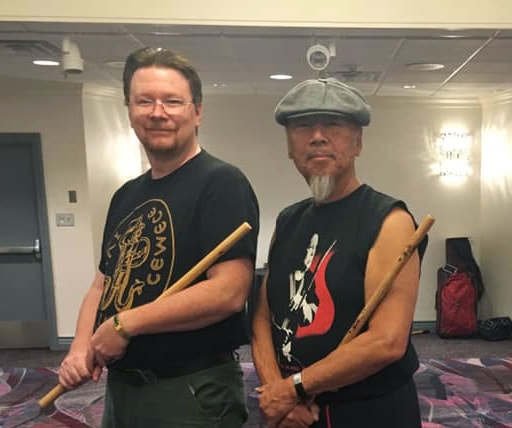
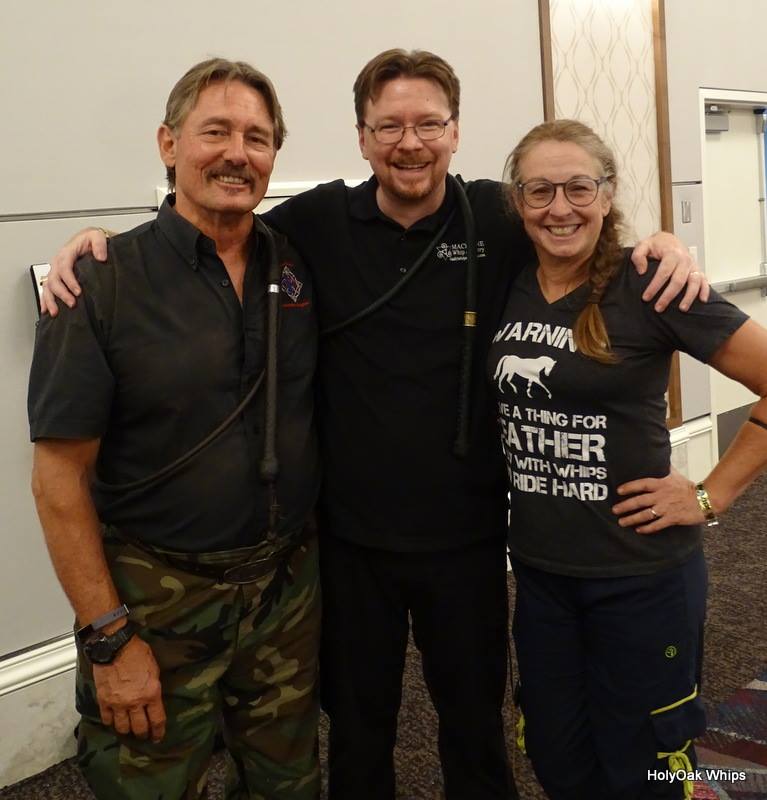
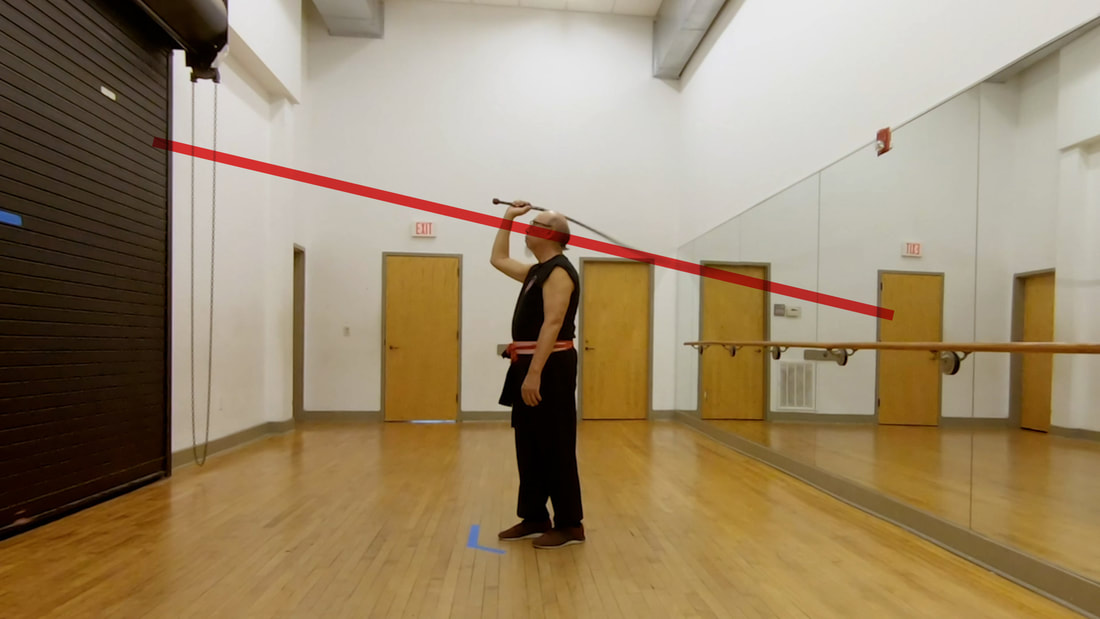
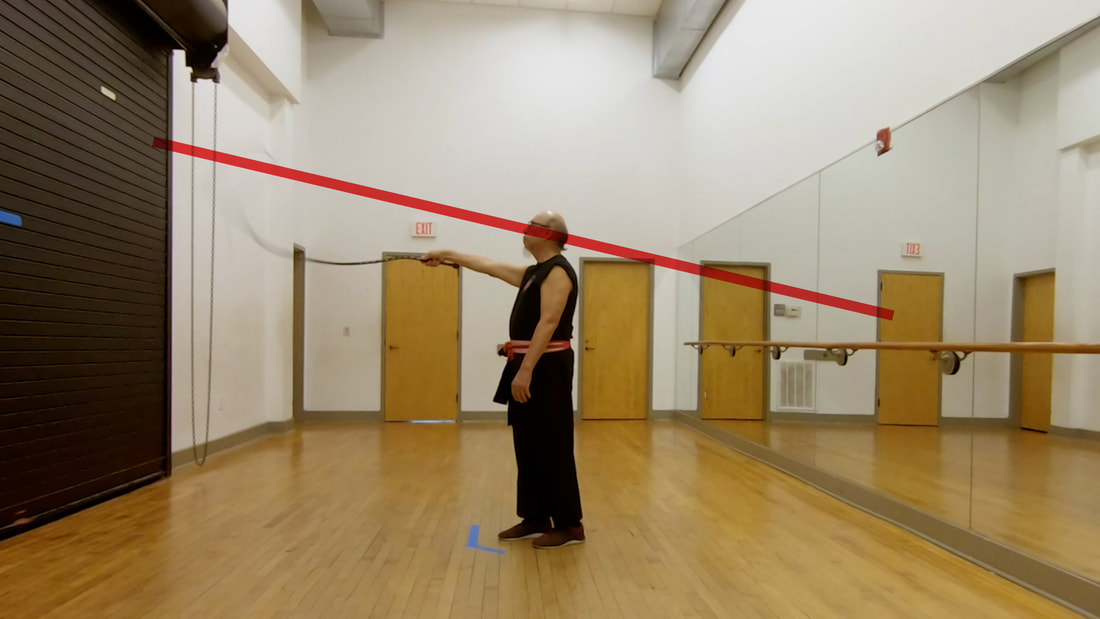
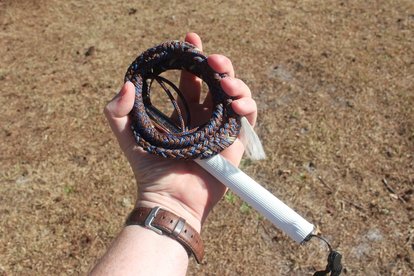
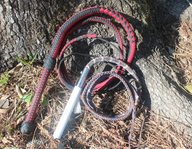
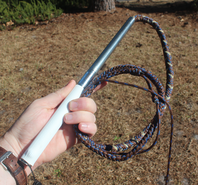
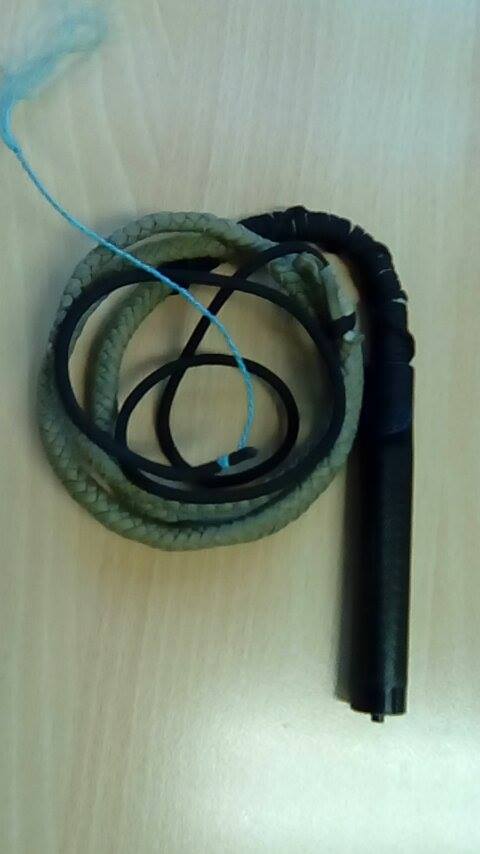
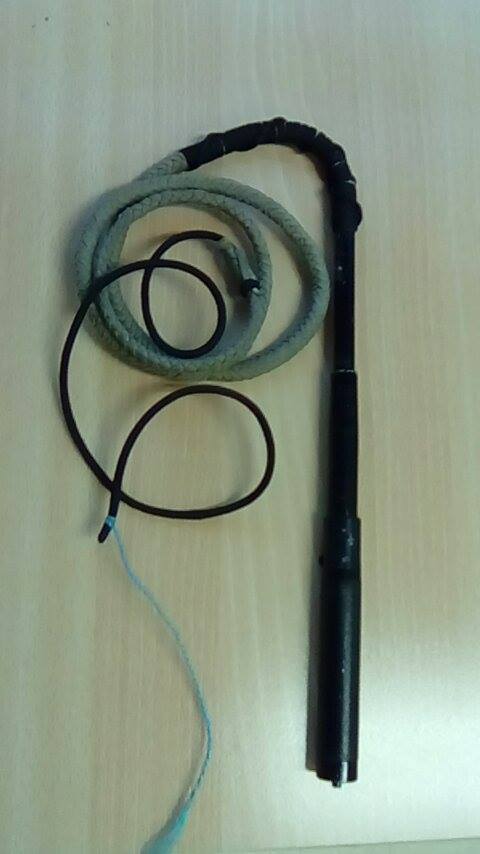
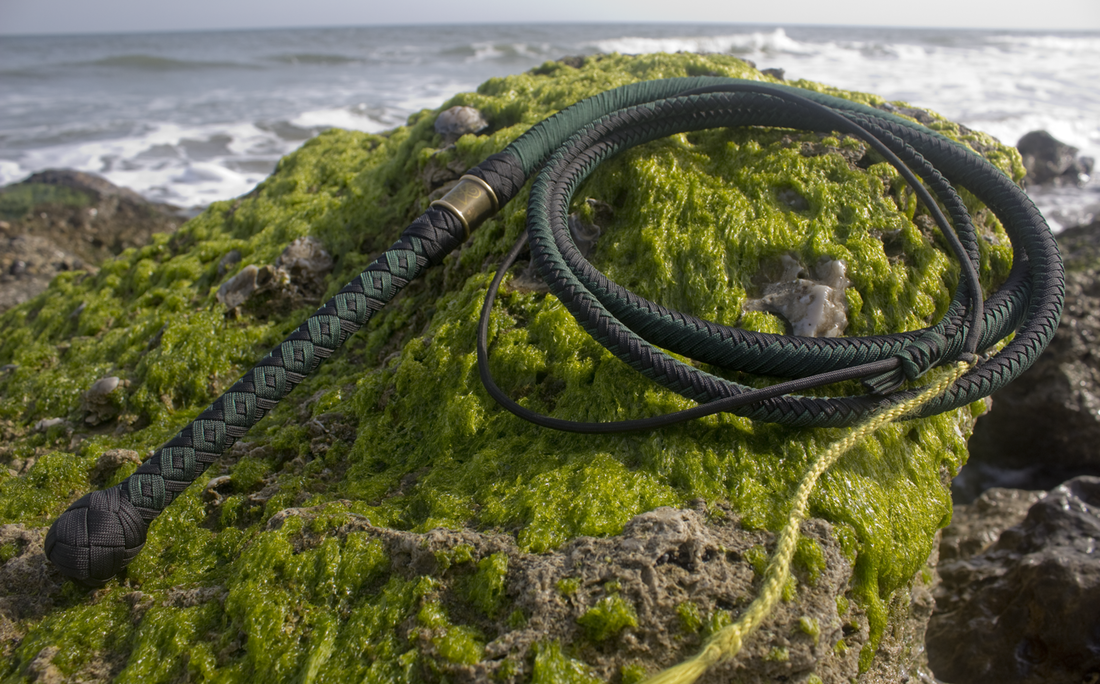
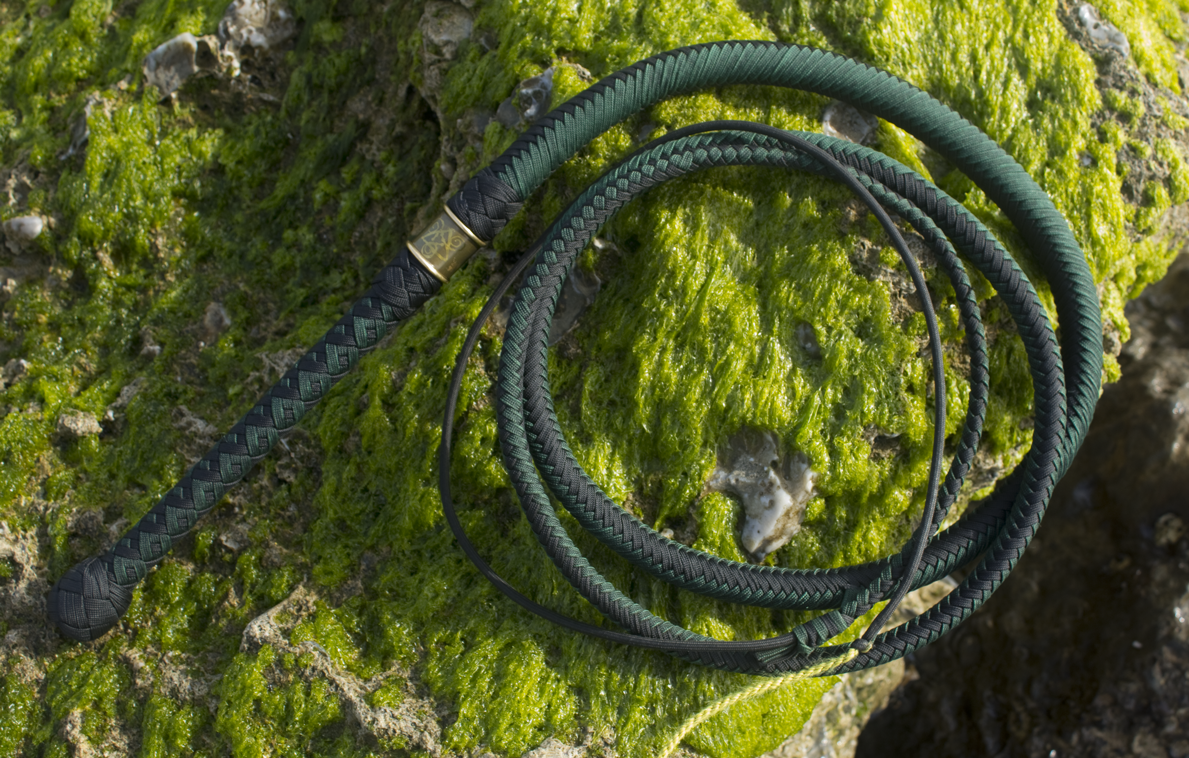
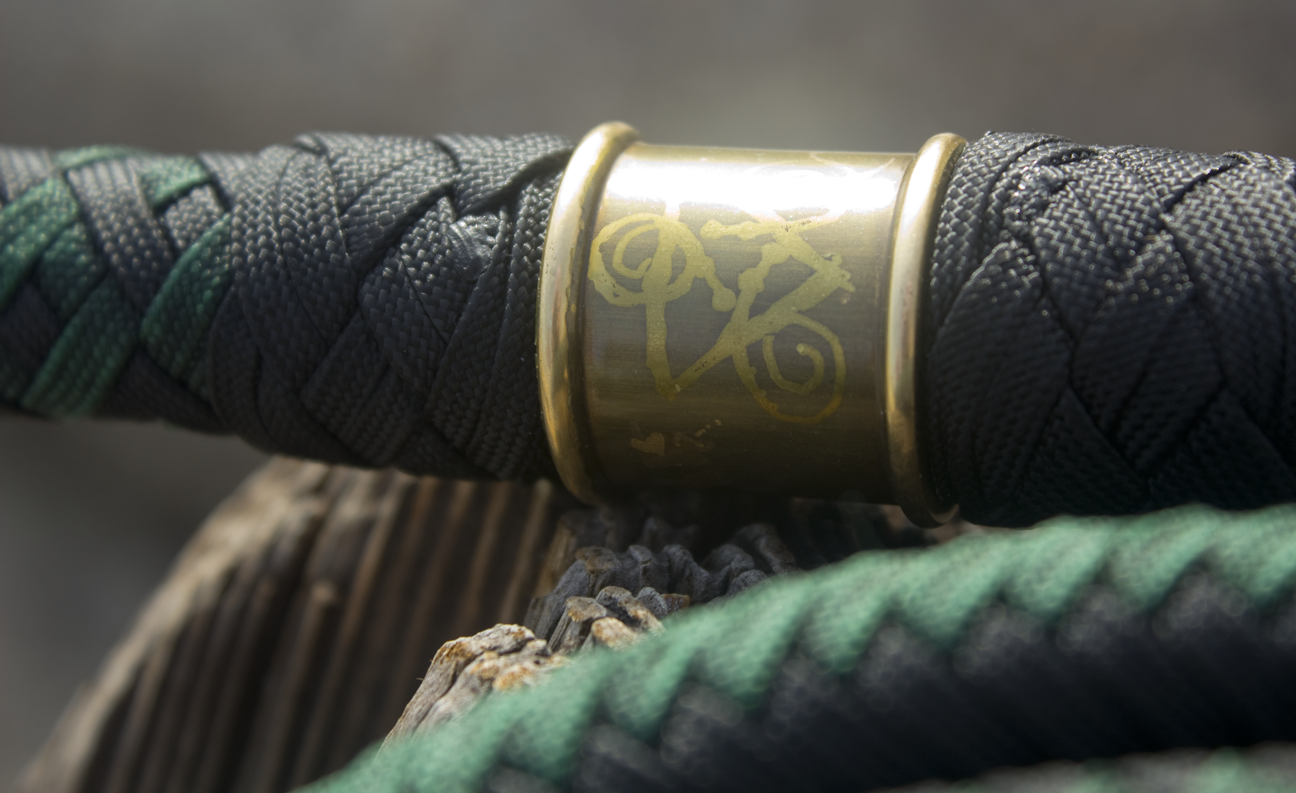
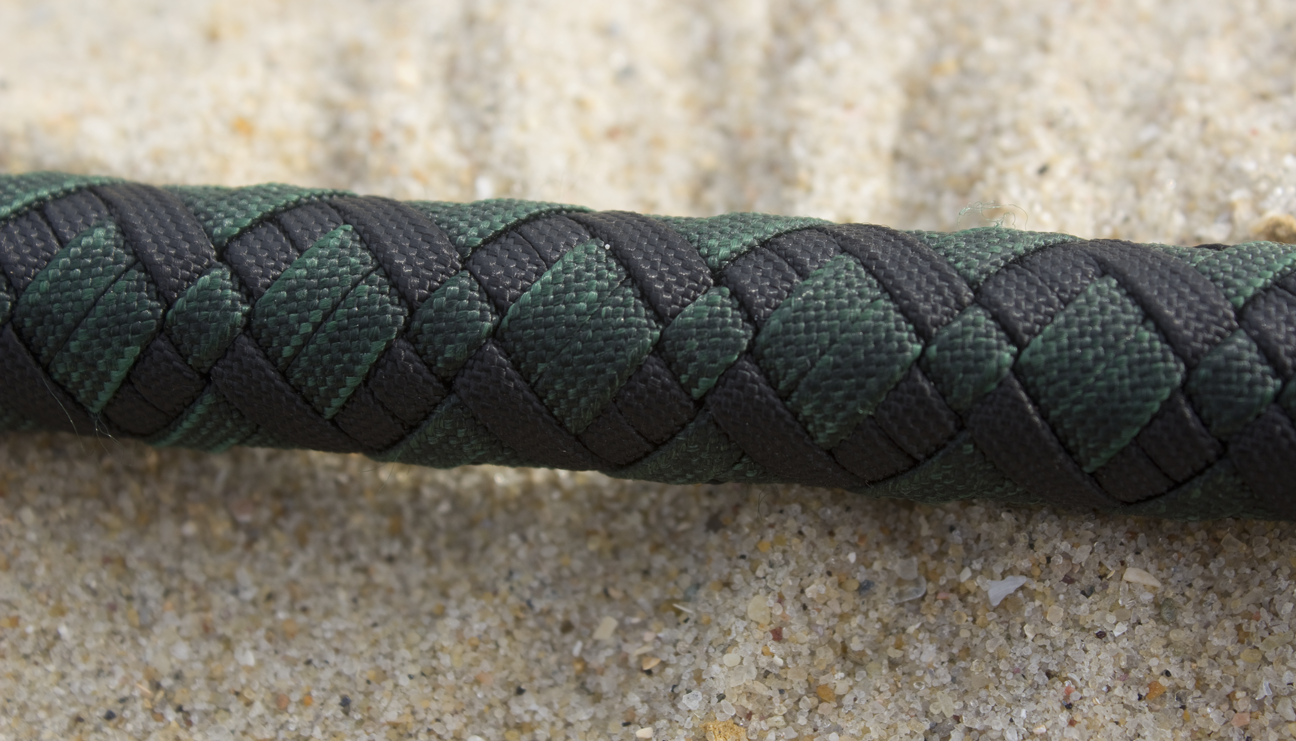

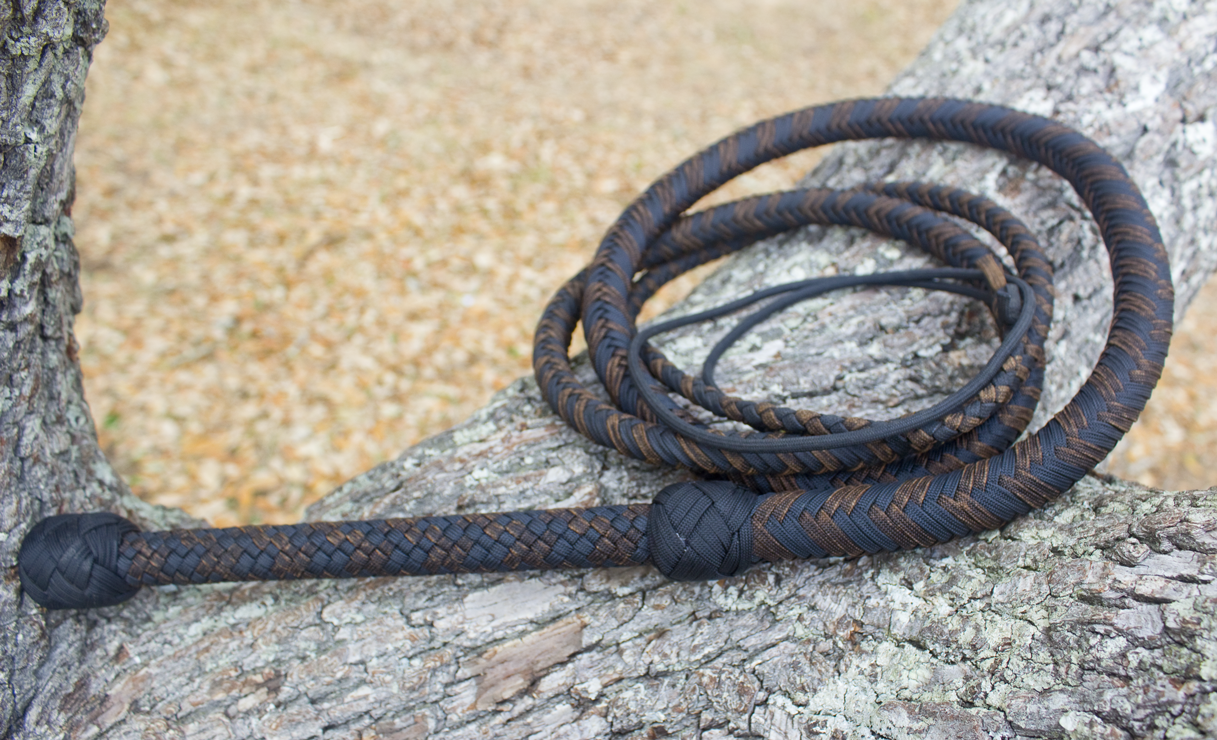
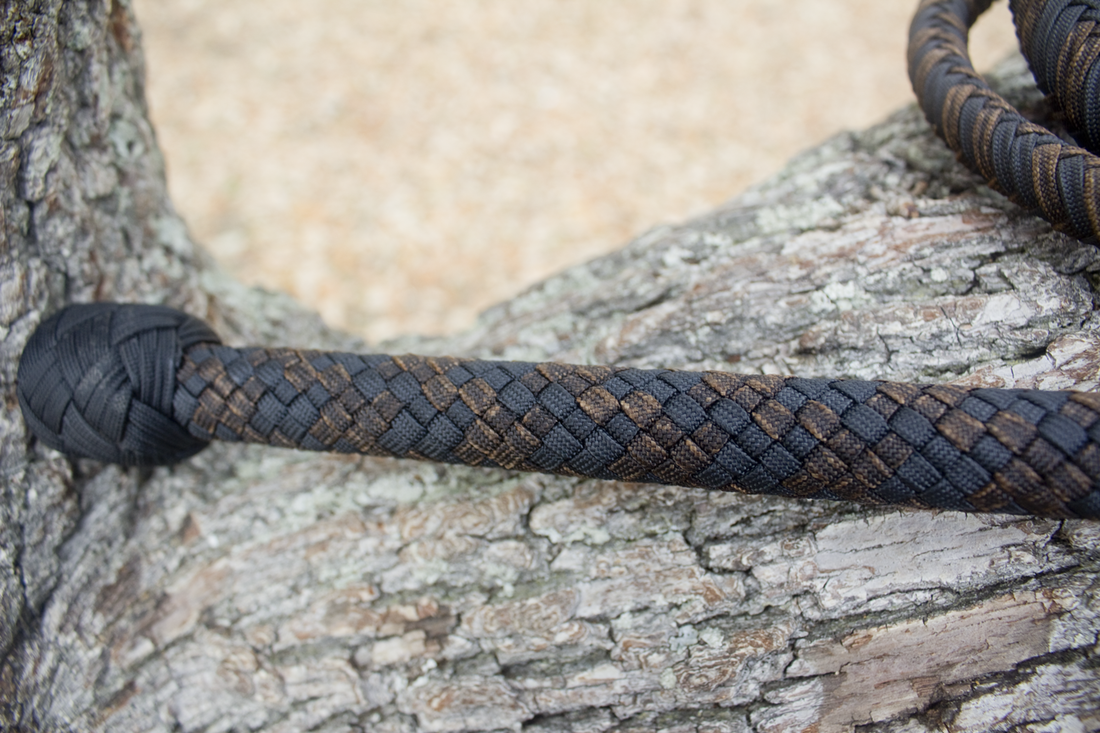
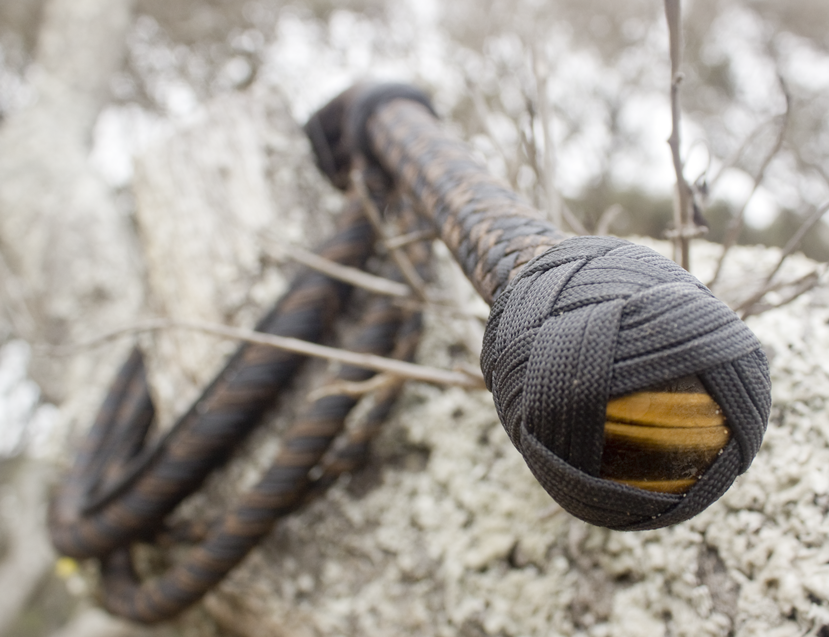
 RSS Feed
RSS Feed
